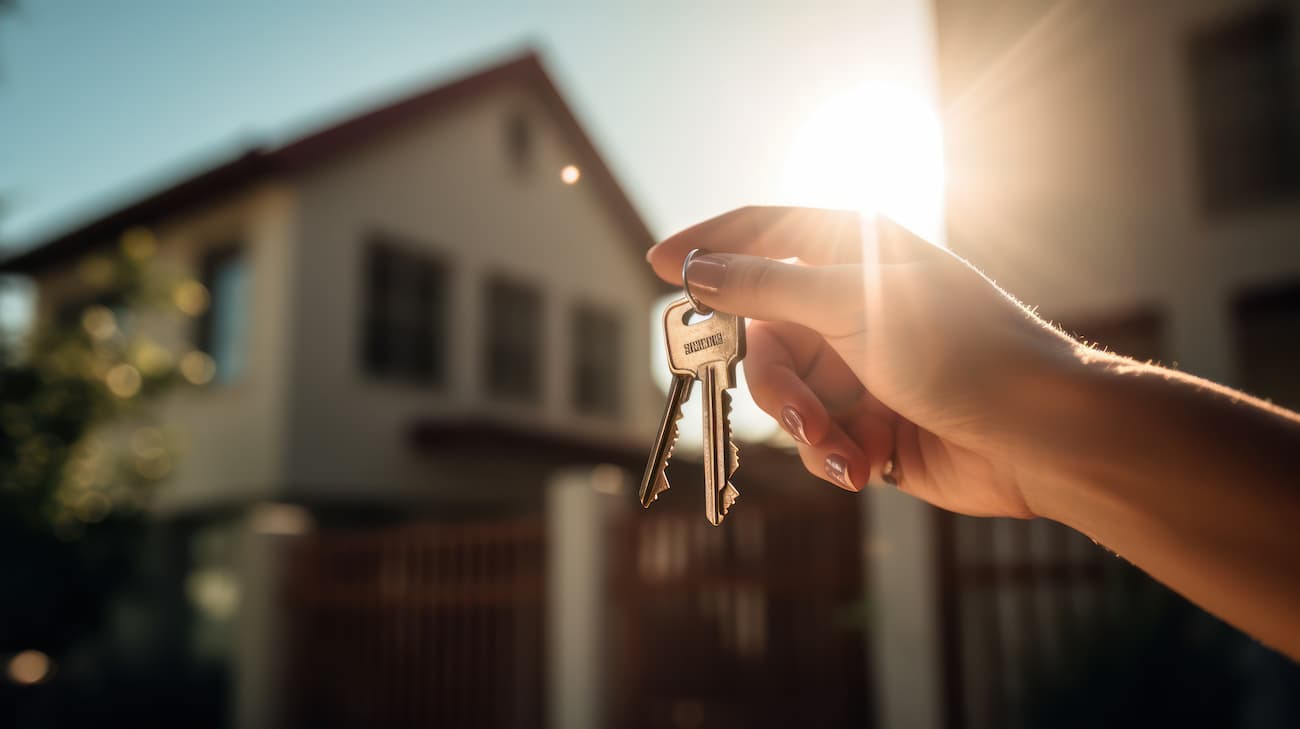The Spanish words adosado and pareado are often confused: what’s the difference?

Highly prized by owners and renters alike, terraced and semi-detached homes offer more autonomy than an apartment and usually come with some kind of garden. The two property types are frequently confused, and people often use the terms interchangeably. While they share some similarities, it’s important to distinguish the two.
What is a terraced house?
A terraced house is a single-family home that shares both exterior walls with adjacent properties. In other words, if you live in a terrace you share your walls with your neighbours on either side. This kind of property is very common in large cities and seaside resorts.
The main advantage over an apartment is that a terraced house gives you a larger useable area. However, your living space will be arranged over multiple floors. This can be a plus, since it creates a greater separation between different areas of your home, but you may find it inconvenient to be constantly trudging up and down stairs.
Another attractive feature of terraced homes, especially for families, is that they tend to come with their own outdoor space. Most will have a garden or patio, usually at the rear. There may even be space for a swimming pool, a massive bonus in the hot summer months. With an apartment, the best you can hope for is a decent-sized balcony or roof terrace. This is why so many dream of moving to a single-family home where they can swim outdoors in the summer and host barbecues with friends.
As far as privacy is concerned, terraced houses have the edge over apartments, as they tend to be found in suburban areas away from the bustle of the city centre. That makes them an appealing prospect for those longing to swap the commotion of urban life for a more peaceful existence in the suburbs or beyond.
So what does semi-detached mean?
A semi-detached house is a single-family home that shares one lateral wall with an adjacent property. Either the left or right exterior wall will be shared with the house next door.
Semi-detached homes offer plenty of space, with a significantly greater useable area than an apartment, although not as much as a fully detached property. If a house is described as detached, that means it is fully independent and does not share any of its walls with another property. Instead, detached homes usually benefit from gardens on all sides.
Semi-detached houses, on the other hand, tend to have garden or patio areas to the front and rear, sometimes connected by an additional space running along one side. In some cases, the garden will be confined to one of these three areas – some people prefer a back garden in the interest of privacy.
In structural terms, semi-detached homes are arranged on several levels, traditionally connected by stairs, although some modern properties may have a lift. You may also find one with a basement and garage, ideal for convenient storage and parking.
Terraced vs. semi-detached homes: main points of difference
As we have seen, the main difference between the two property types is the number of lateral party walls. A semi-detached home is adjoined on one side only, whereas a terraced home is flanked by two others that share the same exterior walls.
Semi-detached properties, therefore, tend to be more self-contained and experience less noise. With just one party wall, occupants don’t have to worry so much about annoying their neighbours and vice versa. Generally, these kinds of properties have no reciprocal obligations in terms of collective costs or the upkeep of shared gardens. In contrast, terraced homes in Spain tend to be part of self-contained developments, where each occupant is responsible for a share of maintenance costs.
This also means that they tend to offer less outdoor space since, being part of an estate, the opportunities for private gardens are more limited.
However, precisely for this reason, they may feel more secure, since estates generally have their own security to guard against intruders.
Another thing to bear in mind is that a terraced house will only have windows to the front and rear, whereas a semi-detached property will get more light from the side. As a result, semi-detached homes tend to be brighter and better ventilated.
Finally, semi-detached homes are more expensive compared with terraced homes in areas with a similar socio-economic profile.
What matters is that prospective buyers or tenants make an informed decision according to their own needs. The best approach is to compare each property type point by point, to reach a full understanding of which option ticks the most boxes for you and your family.


